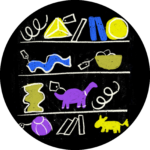
Decoding the Modern Brand Playbook
Brand building is an activity often fueled by long-held, industry agreed-upon approaches. Many classic brand building rules are based in behavioral economics—they’re not bad and exist for good reason. Heck, they built the largest, most enduring brands in our world. But even “good” rules can be broken, and a new cast of modern brands has shown the world that breaking rules with intention can make great things happen. Maybe it’s the years of constant punk rock in my headphones, but there’s something about questioning the status quo to discover a new way is out there that gets my blood pumping. So, I was inspired to put together a new Extra Grind class: Decoding the Modern Brand Playbook. In the class, we looked at eight traditional approaches companies have used to build their brands, each juxtaposed by a different approach—and brand—that zagged away from convention. While many of the examples are B2C-focused, we can take inspiration that transcends categories.
1. Solve a problem for people
There can’t be a brand without a product, so before we get into the more branding-focused activities, let’s start there. The classic approach can be to solve a problem for your organization, first and foremost, through creation of a product. We can look at Crisco as an example of this. Crisco was created for the sole purpose of making a waste product, cotton seeds, profitable for Procter & Gamble. They advertised the brand to success, explaining how to use a product that no natural demand existed for at the time. Compare this with brands launching today, and you’ll see that they all share in solving a problem for people, first and foremost. Billie solves the problem of women overpaying for razors (and being shamed for even having body hair); Brilliant Earth, that diamonds come with ethical conflict; Cheers, that drinking comes with consequences; Prose, that individuality is discounted in personal care. Wherever there is inequity, friction, or other unnecessary challenges in the world, modern brands take notice and do something about it.

2. Streamline for your customers
Another classic approach when it comes to product is to offer a BUNCH of them! Just look at Colgate and Crest. Between the two, they offer 112 SKUs of toothpaste, regardless of the fact that—despite a few minor ingredient differences—there’s little that meaningfully distinguishes each offering. Yet, they and players across many categories offer an excess of options to dominate the shelf and give themselves new news to share. E-commerce was the engine that got brands to think differently about the amount of stuff they need to offer to win. Now, modern brands find success by recognizing exactly what customers want, then cutting out the toiling work of research by just serving up exactly what most people require. As Emily Hayward, Red Antler’s co-founder, shared in her book Obsessed, Away is a model for this approach. Away launched with one suitcase, The Carry-On. Even as they expanded their product portfolio, they were thoughtful about what they introduced and how they named their offerings for simplicity (The Bigger Carry-On, The Medium, The Large). This afforded them more time to focus on building a brand around the love of travel—and less time explaining the nuances between their products.

3. Ground everything in what your product does
Historically, brands have spent big bucks creating TV commercials that have little to no real connection to the products they’re selling. Why? To build an emotional connection that becomes associated with their product and nudges you toward it when it’s time to buy. Coca-Cola are the masters at this. No one has worked harder to associate themselves with pleasure—or in Coke’s case specifically, happiness. As it turns out, teams have conducted research to identify the factors that make up overall happiness. A higher income, belonging to community, being in good health, and work satisfaction all made the list. Coca-Cola did not. Whomp whomp. Again, we can look toward Obsessed for a different approach. Allbirds built their brand around their product’s core attributes: their shoes are sustainable, comfortable, and minimal. They elevated these product attributes into an emotional territory of “curiosity,” because—when all three come together—Allbirds empower their wearer to explore the world around them with a curious mind. At every expression, they brought the brand to life in ways that evoked curiosity, assuring that they always connected the emotion they surround the brand with back to what their product actually enables.

4. Build your brand as a ticket to community
Many classic brands have spent years positioning themselves as a signal to the world. Porsche does this better than any. They’ve worked hard to associate the brand with the ideal of success so that, when you buy one, you’re not just buying a car—you’re buying a signal to the world of where you stand in it. Juxtapose this with modern brands, from Spotify to Soul Cycle, that build themselves not as an individual’s signal to the world, but as a ticket into community. In Porsche’s own category, transportation, SUPER73 is selling out of electric bikes by becoming masters of this approach. Scroll through their Instagram feed and you’ll see image after image of groups riding their bikes and exploring the world together. But they go beyond Instagram to create a sense of community. A pillar of the brand is the Super Squad, a “unique group of inclusive and enthusiastic SUPER73 owners who thrive on electric exploration.” They make their own merch, share photos and stories, spearhead experiences, organize gatherings, and some go so far as to create side businesses that complement SUPER73’s bikes.

5. Make your founder approachable
Classic brands have long treated their founder in one of two ways. Some hide them away like The Man Behind The Curtain, treating their business and people who run it as an invisible layer behind the brand. Others treat them as visionary, larger than life figures—the Henry Fords, Steve Jobs, and Walt Disneys of the world. Many of today’s modern brands treat their founder differently. Instead of promoting their own egos, they make themselves approachable, acting as a bridge between their customers and the brand. (And it’s a lot more fun to support people than a faceless corporation anyway.) While she stepped down earlier this year, it’s long been impossible to separate founder Emily Weiss from Glossier. She’s been an access point into Glossier since day one, even inviting the brand’s eventual fans to generate initial product ideas by sharing with her what was missing in cosmetics.
6. Let others into the party
Classic brands work hard to establish who they are, then work even harder to bludgeon that impression into could-be customers. In recent years, Abercrombie has all-but reinvented itself in an attempt to move past the serious issues that continue to surround the brand. Unfortunately, many of us know them best for their controversial Mike Jeffries era—it’s hard to find a brand that’s been more prescriptive about who they are, who they’re for, and who they’re not for. They’ve gone so far as to offer people (e.g. Jersey Shore’s The Situation) cash for NOT participating in their brand. Today’s most beloved brands have loosened the reins. They know that the model has flipped—that people won’t readily accept brands bludgeoning them over the head with prescribed messages about who they are. Instead, smart brands find ways to participate in the conversations people are already having, allowing customers to help shape and define them in the process. Depop, for example, is a secondhand fashion social platform that knows that their users care a lot more about what their peers think than what the fashion industry—or Depop—tells them to care about. They let others speak through influencer posts, partnerships, UGC, and seller content, then stand behind what their community says to build their brand.
7. Be transparent
When it comes to manufacturing, the classic approach is to not let anyone know the conditions in which the stuff they buy is made. Companies either sever consumption from production at every turn or create a false narrative behind their products. To see an example of this, we can look at America’s favorite cookie-baking creatures, the Keebler elves! After over 50 years of advertising, there’s a childlike part of us that sort of buys into the narrative they’ve created of cookies being baked by elves in trees (despite them being made in a Nabisco production facility). Whomp whomp. While 50 years of advertising have made the approach effective for Keebler, today’s beloved brands are bringing unparalleled transparency to the operations of their business. To launch, Everlane shared an infographic of the actual cost to make a t-shirt compared to what people are expected to pay. This delivered on their promise of “radical transparency”—the north star that guides how they act. This value has not only influenced communications, but business decisions themselves (they delayed the launch of denim, for example, until they were able to find a factory that met their sustainability standards). Modern brands don’t just say things, they do things. And not just random acts—things that genuinely benefit people and the planet are baked into their business model, delivering on the promise of transparency.

8. Surprise the world
“Be consistent” is arguably rule 1 in the classic brand playbook, for good reason. Branding helps to establish familiarity and expectation, and both efforts can be helped when a brand is consistent. Yet again, good rules can be broken with intention, and some modern brands are tossing this classic rule aside and surprising the world at every turn to great success. Liquid Death is a water brand that’s strategically consistent and creatively unpredictable. For them, surprising the world doesn’t mean doing whatever they want whenever they want. It requires being strategically tight about who they are, so they can bring who they are to life in ways that are completely unpredictable. Liquid Death has released a limited run of skateboards designed with paint that included Tony Hawk’s blood. Their CEO got a tattoo of a super fan’s face who chugged a Liquid Death every day for a year. They created an Election Hydration Kit, playfully pushing back on GA making it illegal to give people water within 150 feet of polling places. And when your MO is poking the bear, you’re going to frustrate some people. So they put out a Death Metal album with lyrics made up of negative reviews they received. As one of their leaders shared, “The most exciting, fun thing about Liquid Death is that you never know what we’re going to do next. The consistency is the inconsistency.”
I hope there’s an approach here that inspired you to think differently. More than that, I hope you’ve gained or renewed an appreciation for questioning the rules. There’s no one way to build or manage a brand. The “right” way is simply one backed by intention, and I’m thrilled for the world to see how tomorrow’s modern brands continue to find success in new ways.





